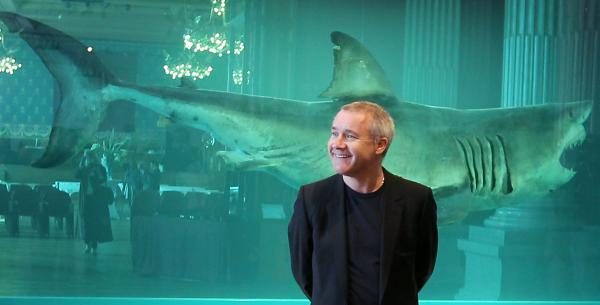
Call it art and that’s what it becomes
Researchers have found that defining an object as art really does alter how people feel about it
In 1973 the artist Michael Craig-Martin put a glass of water on a shelf, installed it in an art gallery and told people that it was an oak tree.
Depending on your point of view this was either a visionary work of art, pricking the bourgeois sensibilities and mediocrity of the age, or the most annoying thing that an artist would do until Damien Hirst saw a shark and some formaldehyde and had an idea.

The Treachery of Images by René Magritte
Well, if you fall in the latter category, there is bad news: Craig-Martin may have had a point. Researchers have shown that the act of defining an object as art really does change how you feel about it.
The concept is arguably the central idea behind movements such as objet trouvé — in which objects such as Marcel Duchamp’s urinal or Tracey Emin’s unmade bed can be considered art if they are put into an artistic context.
It also relates to a theory propounded by Immanuel Kant in his Critique of Judgment, when he argued that in viewing art we must engage differently. “One must not be in the least prepossessed in favour of the existence of the thing, but must preserve complete indifference in this respect, in order to play the part of judge in matters of taste,” he wrote. In the 1920s René Magritte questioned matters of existence with The Treachery of Images — an image of a pipe with the words “Ceci n’est pas une pipe” underneath.
Now researchers at the European College of Neuropsychopharmacology’s congress in Vienna have presented research testing the idea. They gave a group of 24 students pictures to evaluate while their brain activity was measured. The students were told either that the pictures were photographs or that they were works of art.
The pictures had been chosen because they evoked emotion. “They came from an international picture system, a highly validated set of images scored according to how strong emotionally people react to them,” Noah van Dongen, from the Erasmus School of History, Communication and Culture in the Netherlands, said. “They are happy couples, puppies, car crashes, mutilated bodies.” People responded differently depending on whether they thought the images were art or not.
In the two situations their brain responses changed and people appeared to have less of a strong response to the pictures if they were thought to be art. At the same time the students said that they liked the pictures more when they thought that they were works of art.
Mr van Dongen said that this appeared to be a paradoxical result, but it fitted with what some would have expected. “As a student of art I was interested — there are theories of Kant and others that say you have to emotionally distance yourselves from art works in order to appreciate them,” he said. “That’s what we tried, that’s what happened.”
The research also showed that art seemed to be enhanced simply by thinking that it is so. Does this undermine the value of art? Or validate it?
“I think it is true that just placing something in the context of a gallery increases its artistic value,” Mr van Dongen said. “It makes something feel more artistic than it is, or makes something that is not really art seem art.”
Other research has shown that if you tell people that a computer-generated image is a modern artwork from a renowned gallery, they have a different neural response when viewing it.
Even so, Mr van Dongen retains his faith in the profession. “This does not mean art is completely bogus,” he said. “This is just an added effect — it means that something is even more appreciated when placed in a gallery.”
[ssba]
